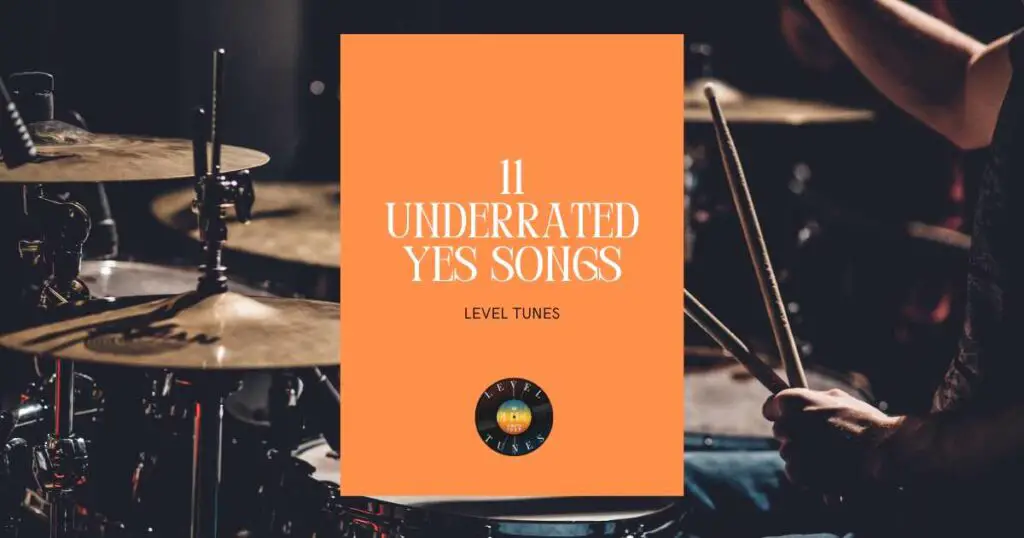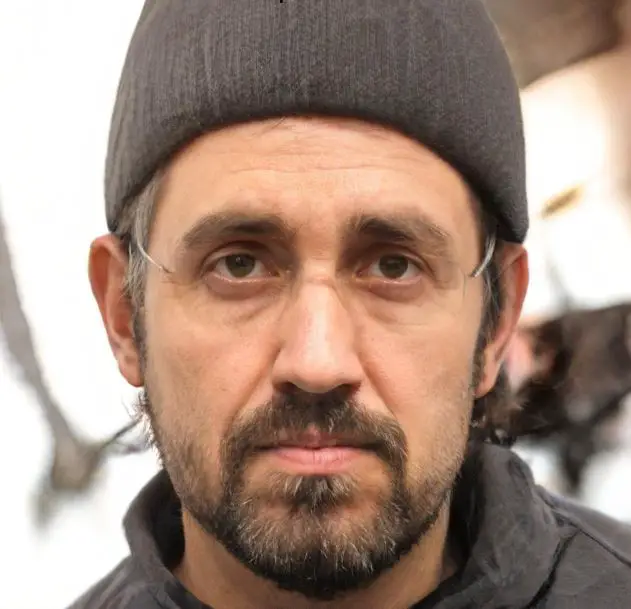11 Underrated Yes Songs: 11 Secret Songs
Hey there, fellow music enthusiasts! TBone here from Level Tunes, your go-to DJ and music aficionado. Today, I’m super excited to share something special with you all – a list of 11 underrated Yes songs.
As a DJ and a lifelong fan of this legendary progressive rock band, I’ve always been fascinated by their lesser-known tracks that somehow don’t get the limelight they deserve.
These gems showcase the band’s incredible talent and versatility, often overshadowed by their more popular hits. So, I decided to dive deep into their discography and bring these underrated masterpieces into the spotlight.
Whether you’re a die-hard Yes fan or just love exploring new tunes, this list is going to be a delightful journey through some truly remarkable music. Let’s get started and uncover these hidden treasures together!
Here are the underrated Yes songs that you can check out:
List Of Underrated Yes Songs
Underrated Yes songs in a list format:
1. “South Side of the Sky” – Fragile (1971, Atlantic Records)
“South Side of the Sky” is a hidden gem from Yes’s fourth album, Fragile. Written by Jon Anderson and Chris Squire, this track is a perfect blend of rock and classical influences, showcasing the band’s experimental edge. Released in 1971 under Atlantic Records, it features an intricate piano interlude by Rick Wakeman, which beautifully contrasts with the heavy guitar riffs and complex rhythms. I chose this song for its brilliant fusion of soft and hard elements, creating a dynamic soundscape that’s both powerful and haunting. It’s a testament to Yes’s ability to push musical boundaries.
2. “Turn of the Century” – Going for the One (1977, Atlantic Records)
“Turn of the Century” from the album Going for the One is a poetic masterpiece. Released in 1977, this song, penned by Jon Anderson, Steve Howe, and Alan White, is a beautiful narrative set to music. It’s a love story told through Anderson’s ethereal vocals and Howe’s delicate guitar work. The song’s gentle, flowing melody and romantic lyrics make it a standout track, different from Yes’s usual complex compositions. I included it for its storytelling prowess and the way it showcases the band’s softer, more introspective side.
3. “Onward” – Tormato (1978, Atlantic Records)
“Onward,” from the album Tormato, is a heartfelt ballad written by Chris Squire. Released in 1978, this song is a departure from Yes’s typical sound, featuring a lush string arrangement and Squire’s tender vocals. It’s a tribute to love and hope, with a simplicity that’s rare in Yes’s catalog. I chose “Onward” for its emotional depth and the way it highlights Squire’s songwriting skills, proving that Yes can masterfully handle both complex epics and straightforward, poignant tunes.
4. “Astral Traveller” – Time and a Word (1970, Atlantic Records)
“Astral Traveller” from Time and a Word, released in 1970, is an early showcase of Yes’s progressive rock potential. Written by Jon Anderson, the song features driving rhythms and psychedelic lyrics, painting a vivid picture of spiritual journeying. Bill Bruford’s dynamic drumming and Peter Banks’s innovative guitar work add to the song’s otherworldly feel. I included “Astral Traveller” for its energetic vibe and as a nod to the band’s early days when they were still shaping their iconic sound.
5. “To Be Over” – Relayer (1974, Atlantic Records)
“To Be Over” is a serene and uplifting track from Yes’s seventh album, Relayer, released in 1974. Composed by Steve Howe, this song is a soothing blend of eastern influences and progressive rock. Howe’s guitar work is at its most expressive here, weaving a tapestry of sound that’s both intricate and accessible. The song’s optimistic lyrics and calming melody make it a unique piece in Yes’s repertoire. I chose it for its meditative quality and the way it showcases the band’s versatility.
6. “Sound Chaser” – Relayer (1974, Atlantic Records)
“Sound Chaser,” another track from Relayer, is a high-energy, jazz-fusion influenced piece. Written by the entire band, it’s a fast-paced, rhythmically complex song that showcases Yes’s technical prowess. The intricate interplay between Chris Squire’s bass, Patrick Moraz’s keyboards, and Alan White’s drums creates a thrilling musical chase. I love this track for its intensity and the way it demonstrates the band’s ability to blend different genres into their unique style.
7. “Machine Messiah” – Drama (1980, Atlantic Records)
“Machine Messiah” from the album Drama, released in 1980, marks a new era for Yes with Geoff Downes and Trevor Horn joining the band. This track, co-written by the band, is a powerful opener with a heavy, almost industrial sound. It’s a bold statement of change, featuring complex arrangements and a dramatic narrative. I included “Machine Messiah” for its boldness and as a representation of Yes’s adaptability and continuous evolution in the world of progressive rock.
8. “Shoot High Aim Low” – Big Generator (1987, Atlantic Records)
From the 1987 album Big Generator, “Shoot High Aim Low” is a song that blends Yes’s classic sound with 80s production. Written by the whole band, it features a mix of atmospheric keyboards, layered vocals, and a driving rhythm section. This track stands out for its reflective lyrics and the interplay between Jon Anderson’s and Trevor Rabin’s vocals. I chose it for its modern take on the Yes sound and its ability to resonate with both old and new fans.
9. “Ritual (Nous sommes du soleil)” – Tales from Topographic Oceans (1973, Atlantic Records)
“Ritual (Nous sommes du soleil)” from the ambitious album Tales from Topographic Oceans (1973) is a sprawling, epic composition. Co-written by Anderson and Howe, it’s a musical journey that encapsulates the band’s exploratory spirit. The song features complex rhythms, mystical lyrics, and an array of textures and dynamics. I love “Ritual” for its grandeur and as an example of Yes’s ability to create a vast, immersive musical landscape.
10. “Madrigal” – Tormato (1978, Atlantic Records)
“Madrigal,” a short but sweet track from Tormato, is a delicate piece written by Anderson and Wakeman. Released in 1978, it features a harpsichord and a lyrical Mellotron, creating a Renaissance-like atmosphere. This song is a testament to Yes’s ability to craft beautiful, understated melodies. I included “Madrigal” for its simplicity and elegance, showcasing a different facet of the band’s musical genius.
11. “The Remembering (High the Memory)” – Tales from Topographic Oceans (1973, Atlantic Records)
Lastly, “The Remembering (High the Memory)” from Tales from Topographic Oceans is an immersive, atmospheric track. Written by the entire band, it’s a serene and expansive piece, featuring lush soundscapes and gentle vocals. The song’s dreamy quality and subtle progression make it a standout track in Yes’s catalog. I chose it for its hypnotic beauty and as a showcase of the band’s skill in creating deeply textured, ambient music.
Fun Facts: Underrated Yes Songs
“South Side of the Sky” – Fragile
- Piano Interlude: The song features a rare piano solo by Rick Wakeman, which was actually improvised during the recording session. Wakeman’s classical training shines through in this section, adding a unique dimension to the track.
- Weather Effects: To create the blizzard sounds heard in the song, the band used wind machines and other studio effects, enhancing the song’s theme of a perilous journey through a snowy landscape.
“Turn of the Century” – Going for the One
- Inspired by Sculpture: The song was inspired by the story of Pygmalion and Galatea. It’s about a sculptor who falls in love with his creation, which then comes to life – a theme that resonates through the delicate and artistic musical arrangement.
- Recording Challenges: Jon Anderson mentioned in interviews that “Turn of the Century” was particularly challenging to record, as it required a perfect balance between the instruments and vocals to capture the song’s ethereal quality.
“Onward” – Tormato
- Dedicated to Love: Chris Squire wrote “Onward” as a love song to his then-wife, Nikki, showcasing a more personal and intimate side of his songwriting.
- Orchestral Elements: The use of a string section in “Onward” was somewhat unusual for Yes at the time, adding a rich, cinematic quality to the track.
“Astral Traveller” – Time and a Word
- Early Experimentation: “Astral Traveller” is a prime example of Yes’s early experimentation with psychedelic and progressive sounds, hinting at the direction the band would take in their future works.
- Drum Techniques: Bill Bruford used a technique called “double drumming” in this song, where he played a rhythm on the drums and then echoed it on a set of timbales, creating a unique echo effect.
“To Be Over” – Relayer
- Eastern Influences: Steve Howe used a sitar-like instrument called a Coral electric sitar on this track, adding an exotic, Eastern flavor to the song’s sound palette.
- Fan Favorite: Despite its relative obscurity, “To Be Over” has remained a favorite among die-hard Yes fans for its calming melody and intricate guitar work.
“Sound Chaser” – Relayer
- Jazz Fusion Vibes: “Sound Chaser” is noted for its jazz fusion influences, a style that was quite popular in the 1970s. This track showcases the band’s ability to blend different musical genres seamlessly.
- Complex Time Signatures: The song features some of the most complex time signatures used by Yes, making it a challenging piece for the band to perform live.
“Machine Messiah” – Drama
- New Lineup, New Sound: With the introduction of Geoff Downes and Trevor Horn, “Machine Messiah” marked a significant shift in Yes’s sound, incorporating more modern and electronic elements.
- Lyrically Prophetic: The song’s lyrics, which touch on themes of technology and dehumanization, were seen as quite prophetic, considering the rise of digital technology in the years following its release.
“Shoot High Aim Low” – Big Generator
- Dual Vocalists: This track is notable for the interplay between Jon Anderson’s and Trevor Rabin’s vocals, a technique that was not commonly used in previous Yes albums.
- Modern Production: “Shoot High Aim Low” features a more polished, 80s production style, reflecting the band’s adaptation to the contemporary music scene of the time.
“Ritual (Nous sommes du soleil)” – Tales from Topographic Oceans
- Epic Length: As one of the longest tracks in Yes’s catalog, “Ritual” exemplifies the band’s penchant for epic compositions, lasting over 21 minutes.
- Group Composition: This song was a true group effort, with each member contributing to its development, showcasing the band’s collaborative spirit.
“Madrigal” – Tormato
- Renaissance Flair: The use of the harpsichord and Mellotron in “Madrigal” gives the song a distinct Renaissance feel, a style not commonly explored in progressive rock.
- Short and Sweet: Contrasting with Yes’s usual lengthy tracks, “Madrigal” is one of their shortest songs, demonstrating the band’s ability to create impactful music in a concise format.
“The Remembering (High the Memory)” – Tales from Topographic Oceans
- Ambient Pioneering: This track is often cited as an early example of ambient music within the rock genre, with its sprawling, atmospheric soundscapes.
- Lyrical Depth: The lyrics of “The Remembering” are deeply poetic, reflecting the band’s interest in spiritual and philosophical themes.
And there you have it, folks! A journey through the lesser-known yet equally mesmerizing world of Yes. These 11 tracks are a testament to the band’s versatility and genius. Dive into these underrated classics and experience the depth of Yes’s musical mastery. Keep exploring and stay tuned for more musical treasures!
Thanks for reading.
TBone




